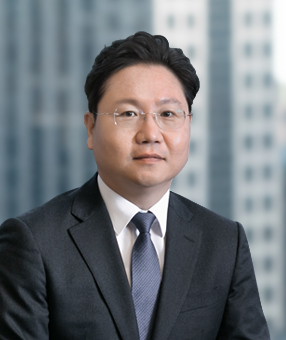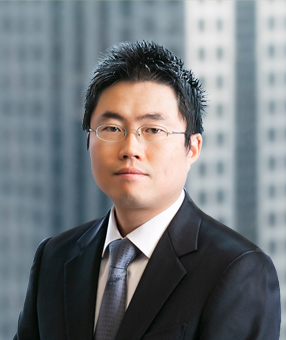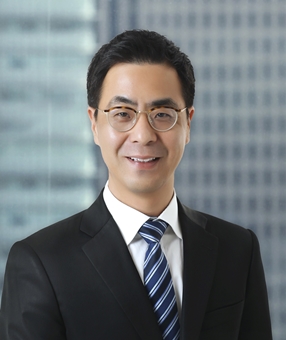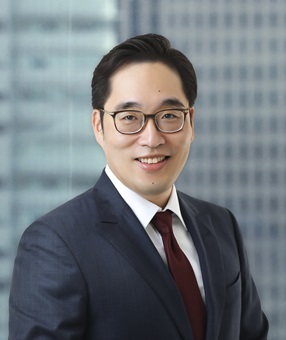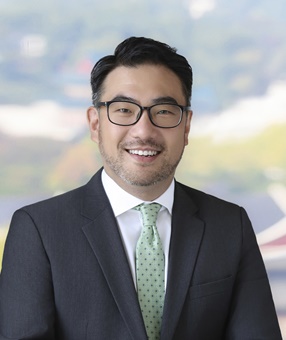On July 21, 2022, the Minister of Trade, Industry and Energy (the “MOTIE”), Mr. Chang-Yang Lee, announced a strategy to become a semiconductor powerhouse (the “Strategy”), and signed an MOU to create an industry-academia collaborative ecosystem in the semiconductor industry. Based on the industry's recommendations and current challenges, the MOTIE prepared the Strategy via close consultations with relevant ministries. The focus of the Strategy is on investment support, talent training, securing leading technology for system semiconductors, and building a solid ecosystem for materials, parts, and equipment. Most of the above were included in the semiconductor industry policy plan presented by President Yoon Seok-yeol in his presidential election pledge, and the Yoon administration's strategy to support the semiconductor industry is gradually taking visible effect. In particular, the Strategy is significant in that it that it was formulated through interagency discussions on de-regulation, with the most crucial part in the Strategy being the measures to promote investments of semiconductor companies through de-regulation.
Key details of the Strategy can be summarized as follows.
Relax Various Regulations on Semiconductor Industry Including Labor and Safety
Given the unique nature of the semiconductor industry where short-term and intensive R&D is crucial, the Yoon administration plans to legalize “special extended work” for semiconductor R&D activities. “Special extended work” system refers to a system where an employer may temporarily extend work hours over the maximum working hours prescribed by law (which is currently 52 hours per week) in “special circumstances” upon both the consent of employees and the approval from the Minister of Employment and Labor (Article 53, Paragraphs 4 and 5 of the Labor Standards Act (the “LSA”)). The scope of “special circumstances” and the specific procedures to obtain an approval of special extended work are set forth in the guidelines of the Ministry of Employment and Labor (the “Guidelines”) as delegated by the Enforcement Rules of the LSA. To implement this plan, however, it is necessary to amend the approval process for special extended work in the Guidelines, and relevant ministries (including the Ministry of Employment and Labor (the “MOEL”) and the MOTIE) are currently in discussion. Meanwhile, the above special extended work system will apply not only to semiconductor manufacturers, but also to suppliers of semiconductor manufacturing equipment, materials and parts should they also engage in semiconductor R&D.
The Yoon administration also plans to relax chemical safety regulations that impose excessive burden on semiconductor businesses.
-
Chemical Substances Control Act (the “CSCA”)
Regarding the CSCA, the government plans to publish an amended notification on the standards for installation and management of hazardous substance handling facilities (the “Standards”) by the end of this year to ease regulations on semiconductor facilities. Under this amendment:
-
If a company is equipped with a device that prevents the spread of outflow or leakage, the company would be exempt from the requirement to comply with certain facility standards such as installation of emergency shutdown equipment, etc.
-
If a company is certified with the standards of the SEMI (Semiconductor Equipment and Materials International), the company would be deemed to have complied with applicable facility standards, and the scope and period of inspection under the Standards would be reduced.
-
Regarding installation inspection of hazardous substance handling facilities, while the main facility inspection system1 used to apply only to the manufacture of electronic integrated circuits (for memory, non-memory and others), it would now apply to the entire semiconductor manufacturing industry, including diodes and transistors under this amendment.
-
High-pressure Gas Safety Control Act (the “HGSCA”)
The HGSCA, another safety regulation, does not currently provide any particular regulation that would allow the use of new pipe material (Superduplex) in next-generation EUV equipment. Therefore, the Strategy intends to amend the HGSCA such that relevant high-tech semiconductor equipment can be quickly installed in Korea. To this end, the Gas Technical Standards Committee plans to amend the Korea Gas Safety Code after reviewing the safety of the new pipe material, including whether it has been certified by other foreign authorities.
In addition, the Strategy aims to continuously seek additional improvements in consideration of the level of regulation overseas.
Strengthen Effective Incentives to Attract Corporate Investments
The Yoon administration plans to (i) provide state-funded supports for the construction of essential infrastructure such as power and water in the Pyeongtaek and Yongin Semiconductor Complexes, where large-scale new construction and expansion are underway, and (ii) increase the floor area ratio of the Semiconductor Complexes by up to 1.4 times (from 350% to 490%). In addition, tax incentives for semiconductor facilities and R&D investments will be expanded, and the Restriction of Special Taxation Act will be amended to increase the scope of tax incentives for equipment investment of large companies to 8-12%, a 2%p increase from the previous rate, and also widen the range of tax support-eligible companies by including test equipment, IP design, and verification technology, etc. in the National Strategic Technologies. Based on the foregoing, it is evident that the key to the government’s strategy to become a semiconductor powerhouse is to provide full support for corporate investments.
Meanwhile, the Act on Special Measures Act for Reinforcement and Protection of National High-Tech Strategic Industry Competitiveness, or the so-called “Special Act on Semiconductors” (“National High-Tech Strategic Industry Act”), went into effect on August 4, 2022. According to procedures set forth therein, an area occupied by (or intended to be occupied by) a business entity engaging in the R&D or commercialization of national high-tech strategic technologies, may be designated as a specialized complex, and the business entity that occupies or intends to occupy a specialized complex will receive significant investment support in terms of simplified permit processes, reduced infrastructure construction costs, and de-regulation.
Following the ongoing survey on national high-tech strategic industrial technology, the Yoon administration plans to designate national high-tech strategic industrial technologies. It is notable that, if a company’s technology is designated as a national high-tech strategic technology, the company would be subject to additional regulations such as the requirement to obtain export approval and overseas M&A approval in accordance with the Act on Prevention of Divulgence and Protection of Industrial Technology, and to take protective measures for such strategic technology.
The Strategy also includes plans to strengthen state support in various areas, including system semiconductors, fabless, and materials, parts and equipment, in addition to semiconductor memory. As such, it is expected to create new business opportunities for the semiconductor industry, including M&A.
Expand Talent Pool in Semiconductor Industry
Samsung Electronics, SK Hynix, Dongjin Semichem, and the Korea Semiconductor Industry Association signed an MOU with the MOTIE in connection with the following four major infrastructures for semiconductor industry-academic cooperation: (i) establishment of a semiconductor academy; (ii) operation of a Korean-style SRC (Semiconductor Research Corporation in the US, which is a public-private semiconductor research consortium that supports R&D and talent training through funding of government and companies); (iii) operation of a Korean-style IMEC (the world’s largest semiconductor research institute in Belgium); and (iv) establishment of industry-academic research departments at university level. The Yoon administration aims to train more than 150,000 semiconductor professionals by 2031 via expansion of industry-academic cooperation.
Implications
Since the inauguration of the new administration, the interest in the semiconductor industry has been on the rise, and the Yoon administration’s policy direction for the semiconductor industry has become clearer to some extent through the Strategy jointly announced by relevant ministries.
There is an evident need to closely monitor the new administration’s investment attraction strategy and de-regulation trends. In particular, given the Yoon administration’s stance to ease regulations on the semiconductor industry, this seems to be an appropriate time to propose the government to abolish or improve unnecessary regulations that may hinder corporate investment or R&D in the semiconductor industry. In addition, while the new de-regulation policies mainly concern regulations of the MOEL and the Ministry of Environment, we expect that the Yoon administration will expand its de-regulation policies to address challenges of companies in various fields, including system semiconductors, fabless, small and medium-sized enterprises, etc., where new business opportunities may arise.
In addition to Korea, the United States and the EU are also discussing new bills to support the semiconductor industry, which will provide funding in tens of trillions of KRW, and other major countries such as Japan and China have announced their support measures to establish a semiconductor supply chain. In the midst of intensifying competition for semiconductor hegemony, the Korean semiconductor industry seems to be facing a crisis, and while Korea is heavily dependent on exports to China, it has recorded a deficit in its trade with China for the past three consecutive months. Under these circumstances, how the Korean government will strive to overcome this challenge is at the center of everyone’s attention.
Related Topics





